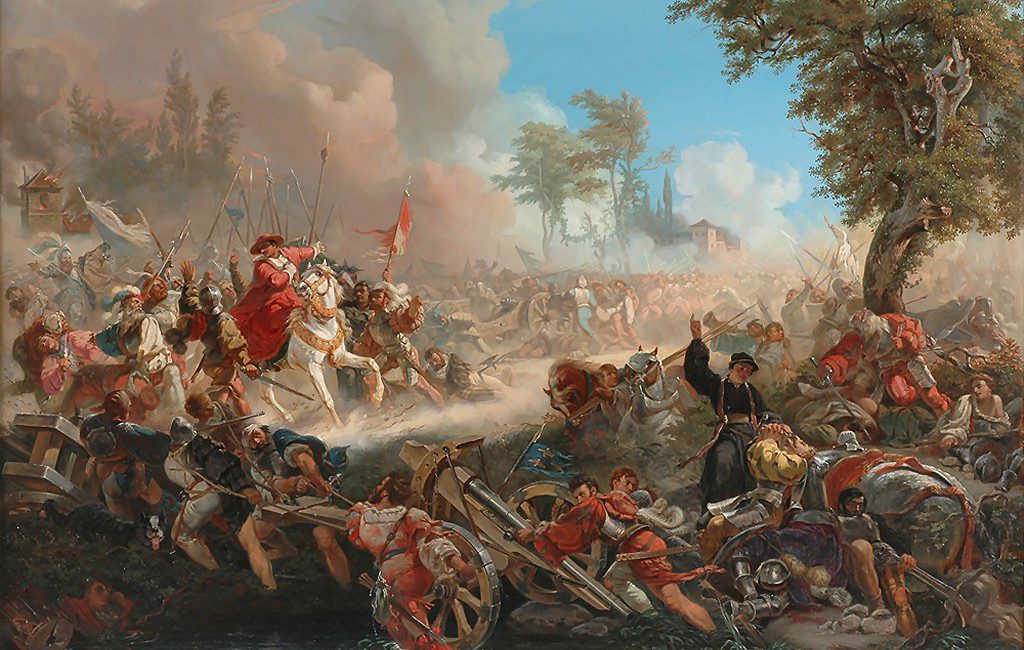King François I of France ascended to the throne of his kingdom on the 1st of January 1515 after the death of Louis XII of France, his 1st cousin once removed. At the age of only 20, François was young, strong, handsome, cultured, courageous, vainglorious, and somewhat arrogant. He had been educated under the supervision of his intelligent and formidable mother – Louise de Savoy, who had become his father’s widow at the age of 19. Louise had hired for her beloved son Italian tutors who had cultivated in him a culture of chivalry and a romance of war, for better or for worse. Under Louis XII, François had received a seat on the Royal Council.
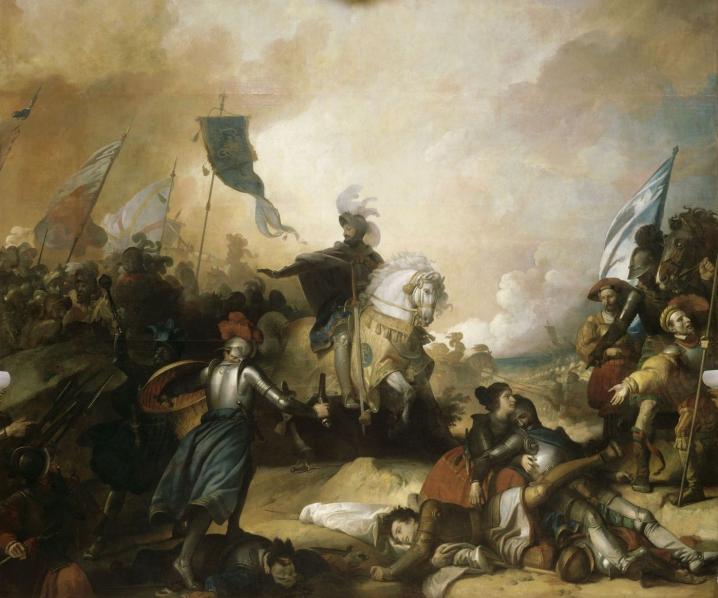
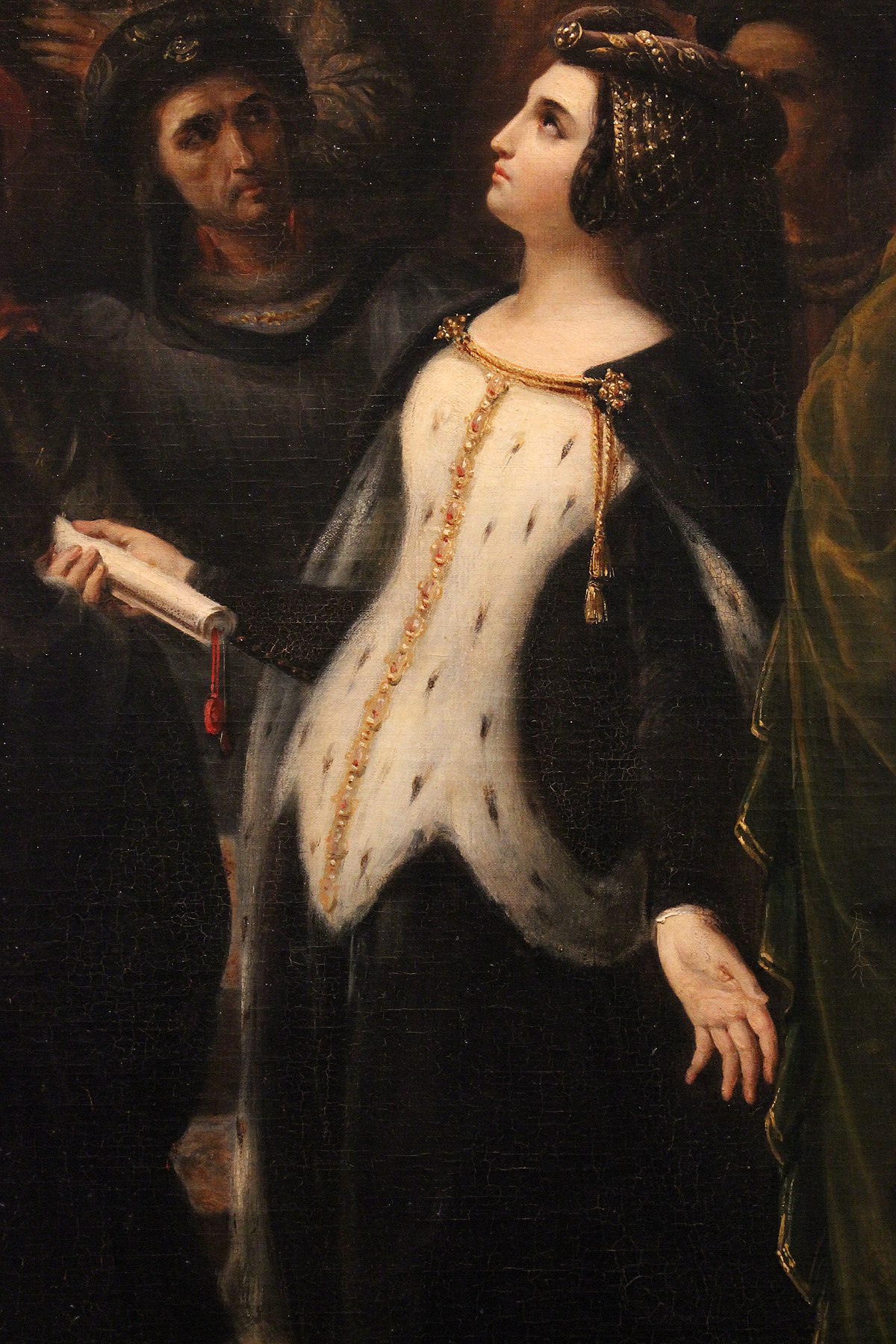
The new monarch was a direct descendant of Valentina Visconti, wife of the tragically murdered Louis d’Orléans in 1407. Therefore, he was extremely eager to press his claim to the Duchy of Milan despite the collapse of the French power in the region under Charles VIII and Louis XII. During his diplomatic preparations for the invasion, François ensured that there would be no invasion to France from the north by signing a treaty with Charles of Burgundy (later Emperor Charles V) in late March 1515, in which Charles consented to marry Renée of France, whose dowry would not include the Duchy of Milan). However, Charles was a man who could easily renege on his word if it suited his purposes, but François did not know it at the time. The treaty with Henry VIII was also renewed in April 1515, just as the alliance with the Venetians was despite their previous betrayal of Louis XII, their initial ally, during the War of the League of Cambrai of 1494-1559. A secret agreement was signed in late April with the Doge of Genoa, Ottaviano Campofregoso, who was threatened by the Swiss.
More than 20,000 landsknechts (German-speaking mercenaries) were employed by the French Crown, including the Black Bands – a group of Italian mercenaries formed and commanded by the famous condotierro Giovanni de’ Medici, also known as Giovanni delle Bande Nere. Giovanni’s men consisted primarily of arquebusiers and were considered the fiercest Italian force available. 10 thousand French infantry were placed under the command of Pedro Navarro, Count of Oliveto, whom François released from his captivity (Perdo had been taken prisoner after the Battle of Ravenna in 1512). The cavalry amounted to 5,000 men-at-arms, and there was a substantial artillery train as well. Among the principal French commanders was Charles de Bourbon, Constable of France, who would later ironically betray his sovereign by allying with the future Emperor Charles V because of his desire to partition France and create his own Bourbon kingdom.
François was full of enthusiasm to lead his armies himself. Not to allow the French to subjugate Milan, Massimiliano Sforza, Duke of Milan from the Sforza family, secured the support of the Pope, King Ferdinand of Aragon, Holy Roman Emperor Maximilian, and the Swiss – they formed a league in July 1515. Pope Leo X (born Giovanni di Lorenzo de’ Medici) at first hesitated, but resolved to ally with them, although Leo was more concerned about retaining his control in Parma and Piacenza. The Swiss and the Milanese planned to engage the French troops immediately after François had crossed the Alps, so they went to Piedmont. Such movements were possible because the Duchy of Savoy was viewed as a neutral territory, despite being ruled by François’ uncle, his mother’s younger brother.
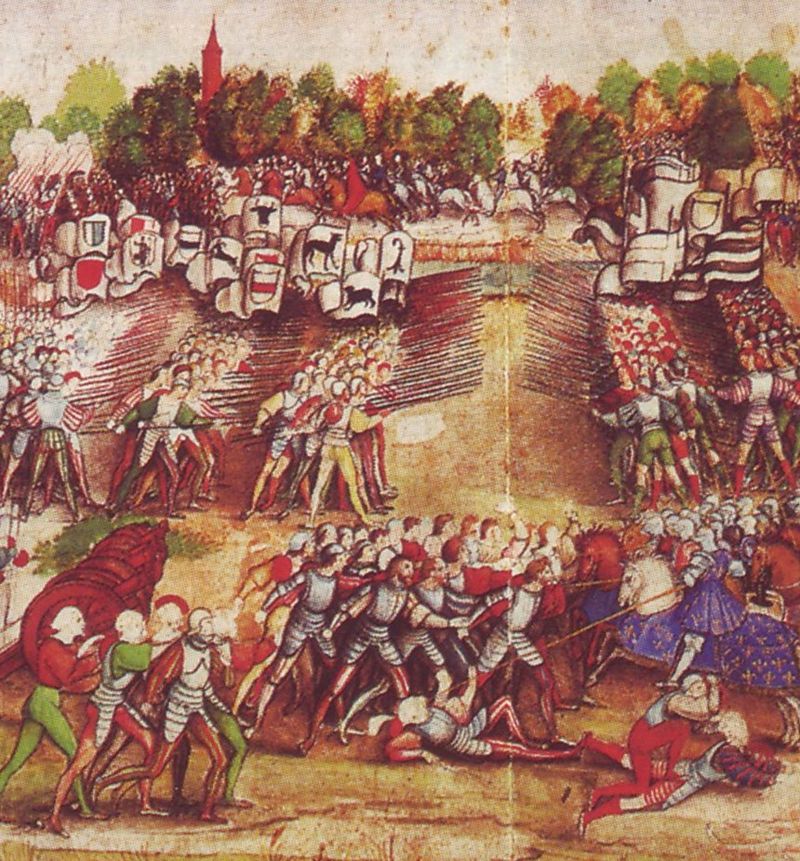
This was a mistake of the Swiss and the Milanese. François sent some of his infantry ahead, but the bulk of his armies crossed the Alps through more complicated routes further to the west. More soldiers sailed from Marseilles to Genoa, where they joined the Genoese forces and captured several towns by surprise. The French divisions, which were led by Jacques de La Palice and Pierre Terrail, Seigneur de Bayard, captured Prospero Colonna and most of his men, horses, and weapons. At the time, Colonna commanded the forces of Pope Leo in north-western Italy, while also being in service to the Duke of Milan as his captain. The Milanese were deprived of their important military man.
The Swiss retreated to the Duchy of Milan; the French divisions commanded by Odet de Foix, Seigneur de Lautrec, followed htem. Gian Giacomo Trivulzio (an Italian nobleman and condotierro) led his division, accompanied by the infantry under Pedro Navarro, to besiege Novara. As the Swiss had already abandoned the city, the French quickly took it, and François made his entrée into Novara on the 30th of August. Many Swiss and Milanese did not want to fight with the formidable French army: some of them offered that Duke Massimiliano Sforza needed to be given some lands and a wife in France, while the Swiss wanted a total of 1 million écus as a compensation for not fighting. Yet, François understood that it was a ruse and ordered the French army to advance towards Milan. Very soon, the papal troops and the Spanish army went to meet with the French, remaining at a distance.
Bartolomeo d’Alviano (a Venetian condotierro and captain) insisted that the Venetians must prove their fealty to their French ally and fight. D’Alviano led his forces to the town of Lodi, located within a day’s march of the French camp at Marignano (Melegnano). On the 13th of September, in late afternoon, the Swiss attacked the French, who were ready and waited for them. According to contemporaries, the French were surprised to see many of the Swiss and Milanese soldiers without proper armor and chainmail. The Milanese and Swiss had virtually no cavalry with them.
King François divided his army into 3 battle groups. The vanguard, which included most of the French artillery, 9,000 landsknechts, and French arquebusiers and archers, were backed by several hundred men-at-arms under Charles de Bourbon, the monarch’s cousin and Constable of France. The Swiss attacked the vanguard first, and despite their military advantage, the French struggled to gain the upper hand in the brutal fighting that continued until the shadows of night mantled the village of Marignano. Both sides slept right on the field. François fell asleep on a gun carriage after he had dispatched his page to d’Alviano, requesting that he bring the Venetian army.
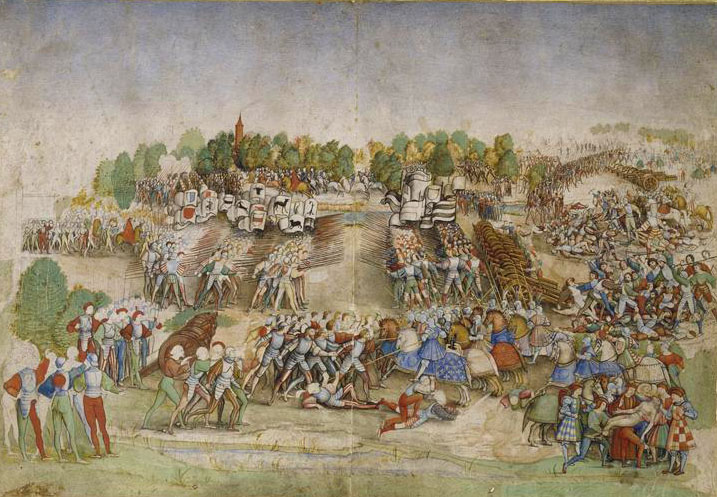
As the fingers of dawn curled across the sky, the sound of French trumpeters roused the soldiers. Once more, François placed his soldiers into 3 battle groups: Charles de Bourbon led the right wing; Charles de Valois, Duke d’Alençon (the king’s brother-in-law and his cousin) was responsible for the left wing; the monarch himself commanded the centre. The Swiss now had artillery that they had confiscated from the French on the previous day, and their generals sent 7-8 thousand men to the Valois left and right wings. Soon d’Alviano arrived, and all the groups of the French were involved into the bloody fighting that lasted for hours. The Swiss, despite their many disadvantages, resisted courageously, but the ferocious charges of the cavalry led by François himself tipped the balance in his favor. The Swiss reluctantly withdrew to the city of Milan.
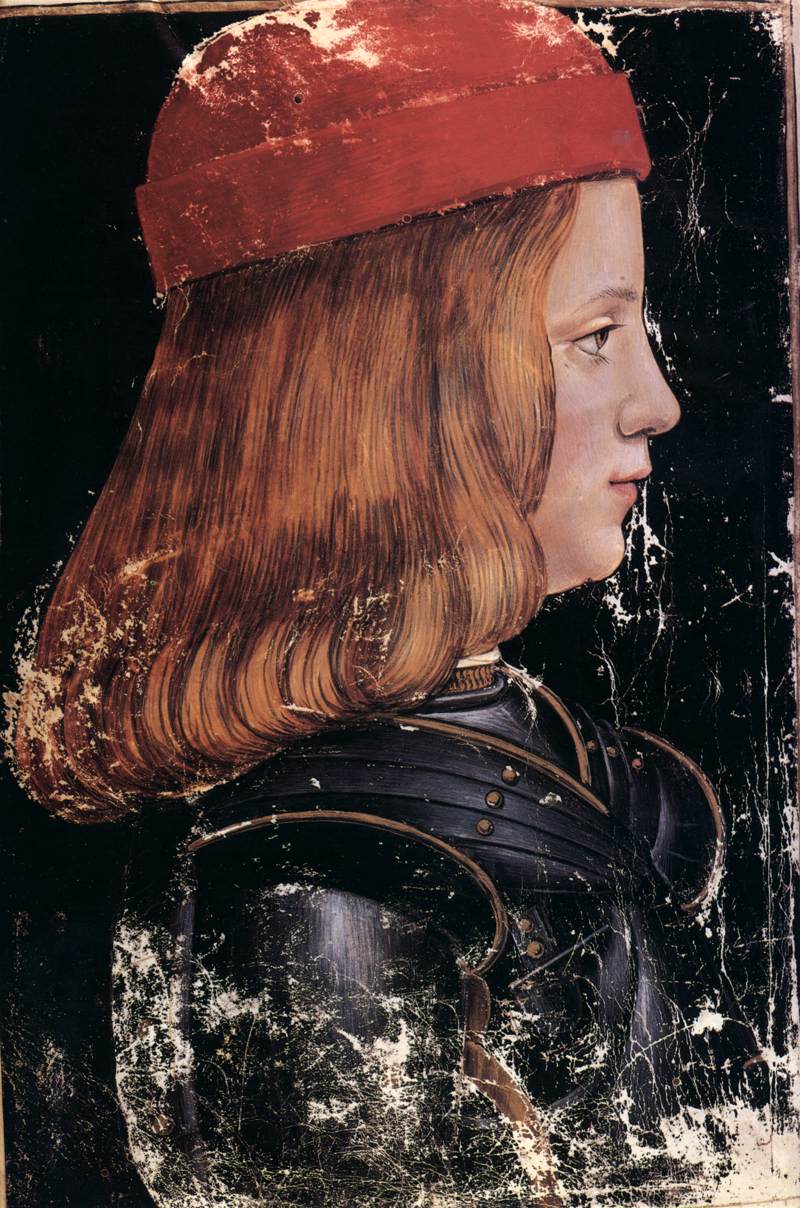
The French emerged triumphant from the Battle of Marignano, much thanks to the help of the Venetians. According to some estimates, about 16,500 corpses of the fallen were interred in mass graves, most of them Swiss. Some French nobles were seriously wounded, including Louis II de la Trémoille and Claude de Lorraine, Duke de Guise, who received 22 wounds, but he recovered. The younger brother of Constable Charles de Bourbon – François, Duke de Châtellerault – was killed. King François himself had been struck by pike-thrusts thrice, and only his armor protected him from a serious injury. Gian Giacomo Trivulzio called Marignano the ‘battle of giants’.
François did pursue the Swiss, for he desired to lure their infantry into his service. Having left the wounded in Milan, the Swiss went home, leaving Duke Massimiliano Sforza alone. A chagrined Massimiliano sent his envoys to the King of France. The city capitulated, while Sforza was deposed and exiled to France. François made his splendid entrée into Milan on the 11th of October, escorted by his household troops, arquebusiers, and landsknechts. François rode under a canopy of cloth of gold, dressed in his fanciful armor and carrying ‘the golden royal baton, with a hand on top’. The king was greeted by his uncle – Duke Charles de Savoy – and William IX, Marquis of Montferrat.
What were the geopolitical outcomes of Marignano? The Spanish and papal troops did not support the ejected Massimiliano Sforza, and the Spanish generals led their soldiers to Naples. François reached an agreement with the Swiss in late November 1515. Pope Leo sought to make peace with the monarch of France and promised to defend France’s possession of the Duchy of Milan. But could Leo’s promises be trusted? After meeting with the Pope in Bologna and reorganizing the government of Milan, François left Charles de Bourbon as his lieutenant-general in the duchy and departed in January 1516. François returned to France in all his glory, warmly welcomed by his family and the whole population of France as a conqueror. Unfortunately, history proved that it was quite a short-lived victory, and Milan would be lost in several years. Young Charles von Habsburg, who would be elected Holy Roman Emperor, would prove to be François’ most ferocious enemy and quite a military competent leader throughout the rest of the king’s life.
All images are in the public domain.
Text © 2020 Olivia Longueville

